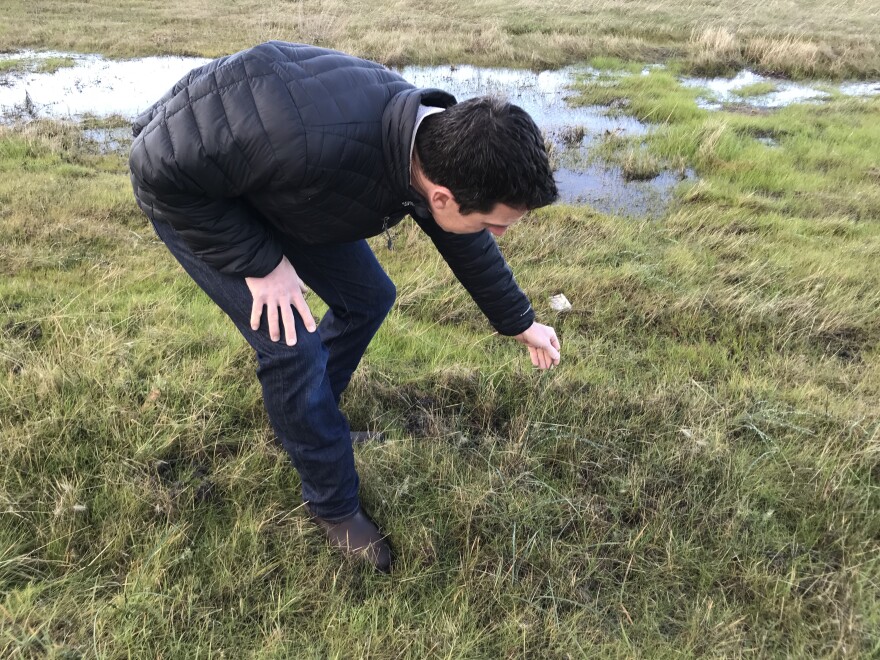California Park is a large area in Chico filled with almost 2,000 condominiums, houses and apartments. It’s located on the east side of the city, just off Deer Creek Highway and Bruce Road. The area has an abundance of wildlife; the geese can be seen flying above the ponds and lake that only Cal Park residents can access.
Listener Mandy Irwin submitted a question to North State Public Radio about the history of neighborhood. Specifically she wanted to know when the lake was built, whether or not it was originally a wetland and why developers created Cal Park in the first place.
To find the answers for Mandy, I talked with Cristina Kinslow who lived in California Park for 18 years before moving to San Francisco. Kinslow described California Park as a quiet and caring neighborhood with a Homeowner’s Association that would sometimes surprise her.

“My parents redid our backyard one time and you have to get what tree you want to plant approved by the Homeowner’s Association,” Kinslow said. “If you want to paint your house, you have to get the exact color approved. There is a lot of care that goes into the look of the neighborhood.”
To learn more about Cal Park’s history, I talked to Michael Weissenborn. He has lived in California Park for 35 years and even worked on the lake.
“We live up on the edge of one of the upper lakes and sit out on the deck and watch the wild birds come through, the ducks, geese,” Weissenborn said.
The California Park project was started by a man named Jack Graham in 1968. Graham had the intention of building the neighborhood in order for middle class people to retire or find a second home they could purchase, Weissenborn said.
I went to Chico State’s Meriam Library, and read part of a thesis titled “Jack Graham’s California Park: A Case Study of Chico’s East Side Growth” by Greg William Armento that said Graham’s project was supposed to house 25,000 people—a number, that at the time, would have been greater than the number of people living in Chico, which had a population of only 19,000.

This project ultimately failed because it was too ambitious. After Graham, Mason McDuffie Mortgage came in and completed the project. I asked Weissenborn when the project was finished, and he estimated it to be around late 1986 to early 1987.
In order to find the exact date, I headed to the city planning department. According to the specifications and notes of the plan, the dam and reservoir were completed on December 23, 1986.
Now that I knew the date of completion, it was time to find out if it was a wetland before a lake. I talked to Don Hankins, a professor in the Geography and Planning Department at Chico State. His area of expertise is specifically wetlands and pyrogeography.

“When we look at the soils, maps and so forth of this area before houses were put in, there's the indicators that those vernal pools complexes and riparian corridors existed in those areas,” Hankins said.
Vernal pools are seasonal wetlands. They flood during the rainy season and dry out to look like grasslands during the warmer seasons. Riparian areas are those that are streamside and are typically associated with wooded vegetation like shrubs, willows and cottonwoods.

Armento’s thesis also stated that there was evidence the area was made up of volcanic mudflow, known as the Tuscan Formation.
So there are your answers Mandy. Cal Park’s dam and reservoir were completed in 1986. The park was built to be a second home for people who wanted to retire or have a vacation home, and the park was originally a wetland composed of volcanic mudflow, vernal pools and riparian areas before being built.


